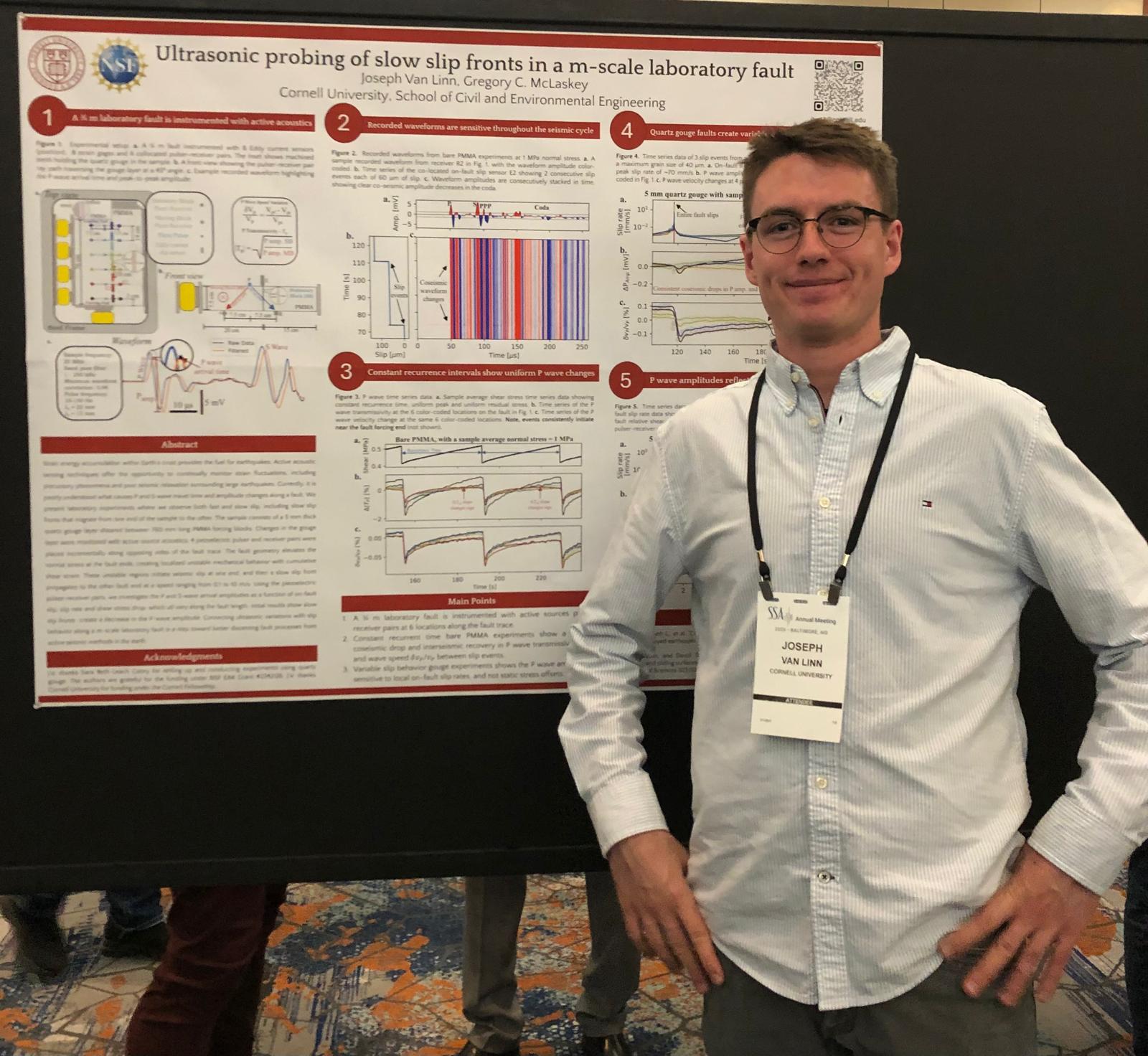SSA2025
I went to the annual Seismological Society of America (SSA) conference. I shared a poster on some lab work I'm really excited about! Using active source acoustics we are seeing P wave amplitudes detect slow slip fronts in a m-scale laboratory fault.

Abstract: Strain energy accumulation within Earth's crust provides the fuel for earthquakes. Active acoustic sensing techniques offer the opportunity to continually monitor strain fluctuations, including precursory phenomena and post seismic relaxation surrounding large earthquakes. Currently, it is poorly understood what causes P and S wave travel time and amplitude changes along a fault. We present laboratory experiments where we observe both fast and slow slip, including slow slip fronts that migrate from one end of the sample to the other. The sample consists of a 5 mm thick quartz gouge layer sheared between 760 mm long PMMA forcing blocks. Changes in the gouge layer were monitored with active source acoustics. 4 piezoelectric pulser and receiver pairs were placed incrementally along opposing sides of the fault trace. The fault geometry elevates the normal stress at the fault ends, creating localized unstable mechanical behavior with cumulative shear strain. These unstable regions initiate seismic slip at one end, and then a slow slip front propagates to the other fault end at a speed ranging from 0.1 to 10 m/s. Using the piezoelectric pulser-receiver pairs, we investigate the P and S wave arrival amplitudes as a function of on-fault slip, slip rate and shear stress drop, which all vary along the fault length. Initial results show slow slip fronts create a decrease in the P wave amplitude. Connecting ultrasonic variations with slip behavior along a m-scale laboratory fault is a step toward better discerning fault processes from active seismic methods in the earth.